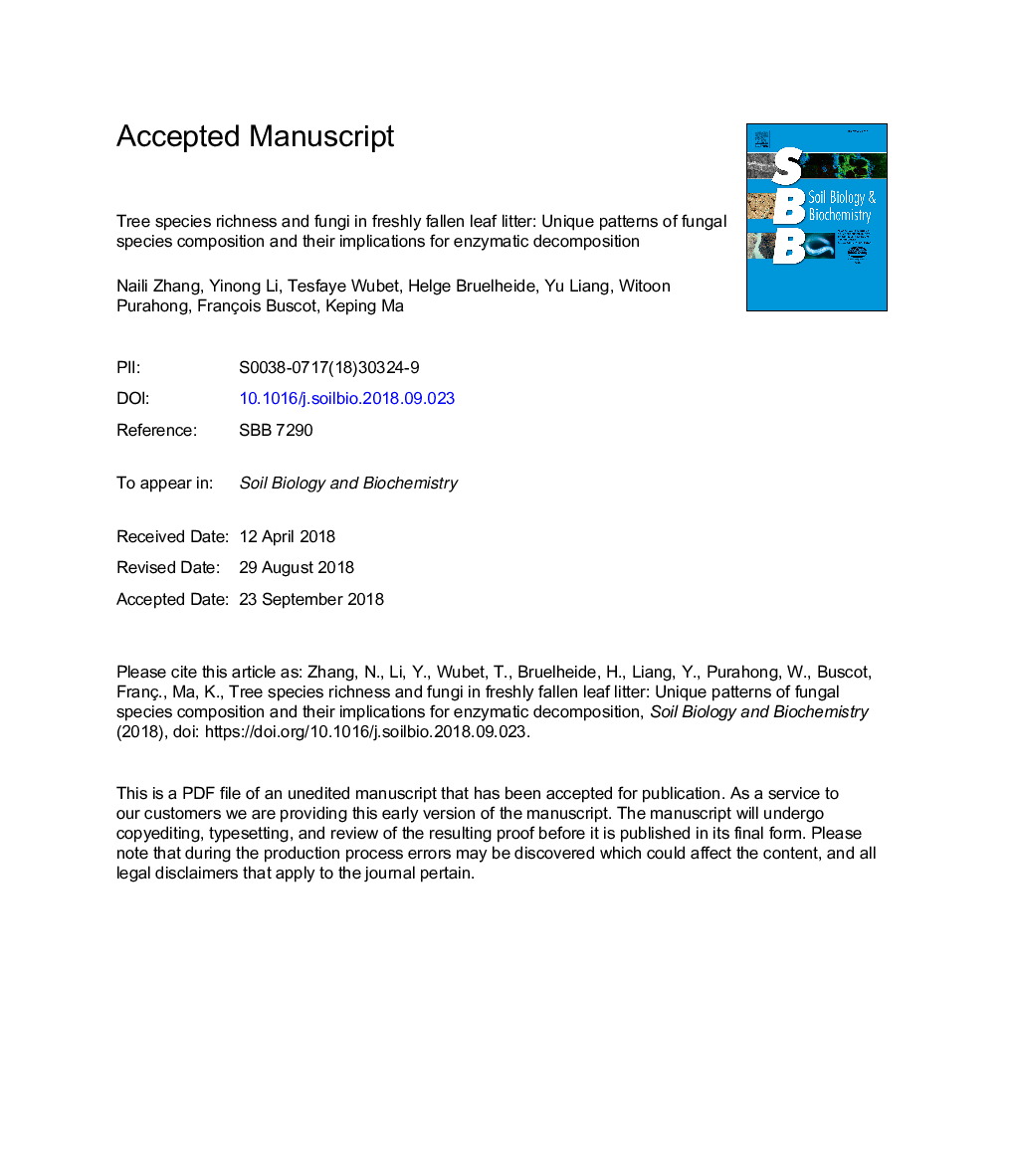| Article ID | Journal | Published Year | Pages | File Type |
|---|---|---|---|---|
| 11025995 | Soil Biology and Biochemistry | 2018 | 30 Pages |
Abstract
A major gap in understanding the relationship between tree diversity and litter decomposition concerns knowledge of the saprotrophic fungal communities mediating decomposition processes. Making use of experimental tree diversity plots in subtropical China, our objective was to disentangle the effects of tree species richness on diversity, abundance, and composition of saprotrophic fungal communities in freshly fallen leaf litter. We employed a meta-genomic approach and analysed enzymatic decomposition. Our results indicate the dominance of Ascomycota, with species from this phylum colonizing leaf litter more rapidly than Basidiomycota. Furthermore, Ascomycota was the most abundant when tree richness was intermediate. Both Ascomycota and Basidiomycota differed significantly in their species composition in response to varying tree species richness. However, saprotrophic fungal species diversity did not respond to tree species richness. Instead, litter C/N ratio, litter Ca and plot altitude were the strongest determinants of fungal species diversity. Carbon-degradation enzyme activities were also significantly associated with litter C/N ratio, Ca and Fe concentration and, in addition, with tree species richness. The responses of fungal species and enzyme activity to tree species richness were uncoupled from each other, although the two variables were significantly correlated. Overall, our findings highlight a significant effect of tree species richness on litter fungal species composition, but not diversity. Our findings also provide insight into the importance of enzyme-mediated C degradation for the response to tree species richness in early-stage leaf decay in subtropical forests.
Keywords
Related Topics
Life Sciences
Agricultural and Biological Sciences
Soil Science
Authors
Naili Zhang, Yinong Li, Tesfaye Wubet, Helge Bruelheide, Yu Liang, Witoon Purahong, François Buscot, Keping Ma,
